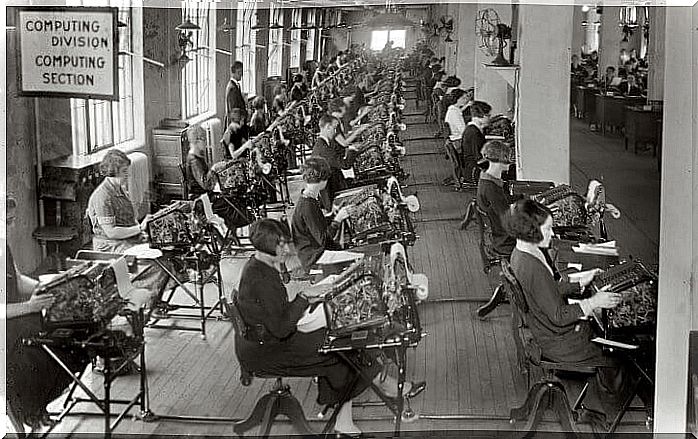The Hawthorne Effect: We Change When They Look At Us

The Hawthorne Effect is called the change that people undergo when they know that they are being observed and studied. It began to be talked about from a study carried out in 1955 by the researcher Henry A. Landsberger. This expert analyzed some experiments carried out by Elton Mayo, during 1924 and 1932, in a factory called Hawthorne Works.
The Mayo experiments were intended to identify what changes there were in worker productivity with changes in lighting. In the end, it was found that the level of illumination did not produce alterations in the performance of the employees, as long as there was a clear minimum.
However, an increase in productivity was observed in some workers. This had nothing to do with light. Simply those who knew they were being studied became more productive. Performance rose automatically when employees detected that they were under constant observation.
The initial conclusion was that the workers felt special for having been selected for the study. This made them respond more efficiently in their work. The other factors such as lighting, ventilation and even the infrastructure did not cause a major impact on each other. This was called the Hawthorne Effect.
Workers’ views on the Hawthorne Effect
To corroborate the existence of the Hawthorne Effect, the researchers interviewed the workers. They wanted to inquire with them directly about what or what were the factors that in their opinion had influenced to increase productivity. What the employees said surprised the study directors.

According to the workers, the decisive factor for them to become more efficient is that they had detected an improvement in interpersonal relationships within the factory. Apparently, inadvertently, the researchers had improved the work environment to get employees to collaborate with the experiment.
Based on these results, a new branch of psychology was created: industrial. Human relationships were assumed to be an element that had a decisive impact on productivity. Even so, the idea persisted that the subjects had also changed just because they were being observed.
The Hawthorne Effect today
After this initial phase of research, other studies have been carried out in this regard. However, so far, none of them are totally conclusive. Despite this, the existence of the Hawthorne Effect is admitted, as a positive psychological reaction to the fact of being observed during an experiment. This effect is especially positive when the task we are talking about is not very complex, otherwise “the observation effect” can be counterproductive to performance.

Apparently, people form a series of fantasies around what researchers expect to see of them. They do not consider it valid to act in a normal way, as they would in their ordinary routine. Rather, they think they should elevate their behavior to the levels that researchers are supposed to want to observe. In other words, they align their behavior to beliefs.
This, of course, does not only apply to experiments conducted in the workplace. It also extends to all kinds of experimentation with human beings. The Hawthorne Effect then introduces a bias in the investigations, which must be taken into account.
Other aspects of the Hawthorne Effect
The Hawthorne Effect has been considered a particularly troublesome factor in medical research. Some patients, knowing that they are being observed, claim that there has been an improvement that does not have a correlate in medical tests. This is verified when objective clinical indices are analyzed. The patient says he is better, but medical tests say that there has been no change.

The Hawthorne Effect, or improvement in behavior, in addition to occurring in situations where the person feels observed, also manifests itself in other circumstances such as the following:
- When a new situation arises that disrupts the routine.
- When people feel installed in an artificial situation, for example, when they are taken to a laboratory.
- When the experiment is maintained for some time and then a change is introduced in it.
- When the person believes that he is in a situation that could bring him benefits if he improves his performance.
- When factors appear that reduce the feeling of boredom.
Many have questioned the accuracy of the information available on the Hawthorne Effect. It is a concept that is still under study and against which there are still many questions. However, it is an interesting psychological phenomenon that could be applied to improve the performance of people in different situations, especially in those with simple and repetitive performance, as we have already said.









